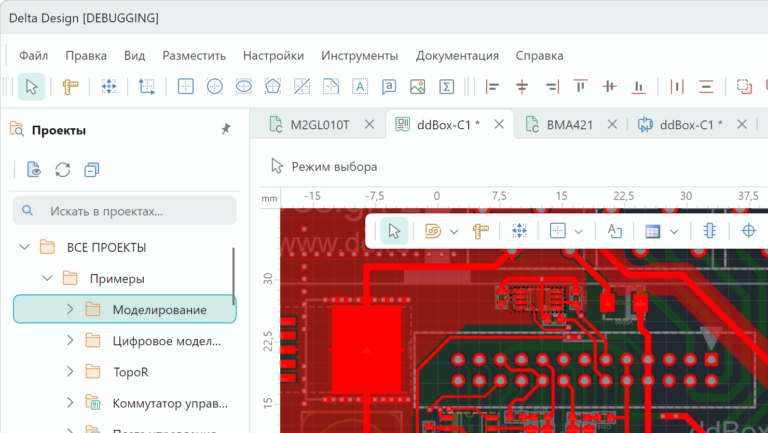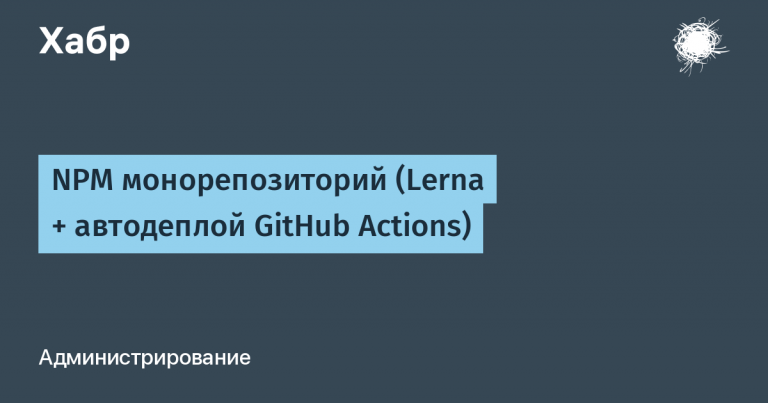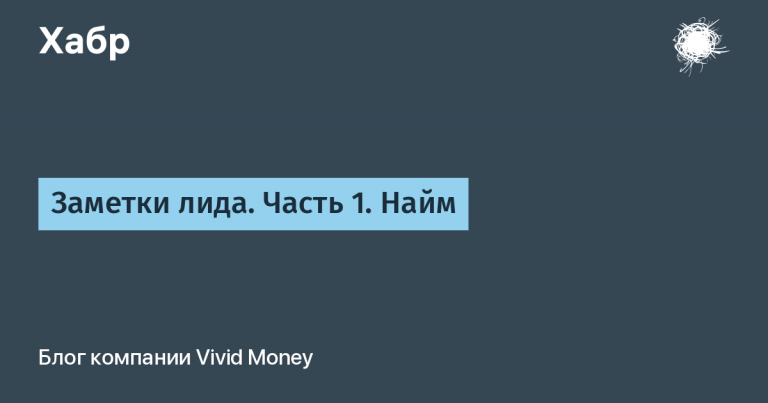TRENDS IN CLOUD TECHNOLOGIES, CDN AND CYBER SECURITY FOR 2024 IN THE RF
EdgeCenter experts assessed what awaits the IT market in the coming year, focusing on the development of cloud trends, CDN and cyber protection. These themes can be called three horses in a harness, which seem to be each on its own, but at the same time connected with each other and working more effectively together. Speed and reliability are what the modern Internet traveler expects from these rides. By the way, harness horses are now increasingly not from overseas. Local. However, they are not short of agility and zeal. The changing balance of power and the departure of Western players from the Russian market dictates its own rules and influences the main trends in the field of network technologies.
The main trend in the IT industry in the coming year is import substitution. The current political situation has provoked an even greater need for digitalization of all spheres of life within the Russian Federation, moreover, relying specifically on domestic resources. The trend towards autonomy entails a transition to Russian solutions, including in the field of CDN.
The CDN market continues to grow as more users demand the ability to quickly deliver and retrieve content. Businesses are actively using this technology as a way to best satisfy the needs of their audience. Less delay means more clients. This aspect is especially important for companies involved in streaming, whose share is steadily growing in the Russian Federation. The previous network infrastructure, which involved distributing information from one point, can no longer solve issues of high-quality connection. CDN networks that geographically distribute content so that anyone in the world can receive it at the same speed have become a truly relevant solution. Particularly active use of CDN can be observed in the field of online education and live broadcasts of sporting events, where stable and fast data delivery becomes critical.
In 2024, experts predict the growth of the CDN market to 3.5 billion rubles. Its participants are network companies that, in addition to access to the CDN, own data transmission channels, deployed infrastructure and additional technical capabilities. The expansion of the map of Russian CDN servers today allows consumers to receive content even during peak load times. And this market will obviously grow and will probably even outpace forecasts – due to an objective decrease in the share of foreign CDN providers in our country. It can be assumed that the pricing policy will change along with this. The growth of the service will make its tariff plans more flexible, which will allow us to approach the client’s tasks more individually, taking into account the volume of content and its audience.
The growth of the CDN market in Russia is also associated with increased interest in cloud technologies, since they underlie the operating principle of delivery networks. Companies are actively investing in the development of cloud services, which also means increasing infrastructure capacity. A good example is the development of Edge Cloud Computin, a solution that allows client applications to run at the “edges” of the network, as close to users as possible. Using this technology, you can speed up content loading and increase user satisfaction, which is extremely important for business.
It is worth recalling that we can formulate the main request of a modern client as speed and reliability. Fast content delivery and peace of mind in data protection. This is why cloud edge solutions are becoming increasingly popular because they provide powerful tools for these needs. The cloud is an infrastructure for storing and changing information on remote servers, while edge solutions are local servers or devices that process data right where it is generated.
The development of domestic infrastructure influences the next important trend – flexibility and control over IT resources. One of its aspects is the trend towards a hybrid approach to deploying cloud services: in a public cloud, the infrastructure is provided to any customers, a private cloud is managed by only one organization, and in the case of a hybrid, the company uses both private and public clouds. At the moment, most players in the market are not ready to completely move to the cloud, maintaining the bulk of their own infrastructure in a stand-alone format or their own private cloud, preferring to deploy only R&D projects in the cloud.
In connection with the above, we can predict that the trend toward the development of the market for infrastructure as a service (IaaS) and platform as a service (PaaS) will continue. In essence, this is the realization of pent-up demand that arose due to the break with the West and the need to narrow the geography of placement only to the borders of the Russian Federation. The issue of import substitution leads clients to the decision not to have their own facilities, but to use them as a service. Cloud solution providers are ready to provide clients with their highly secure data processing and storage centers with a large number of hardware devices. The customer receives flexible and secure access to virtually unlimited cloud computing resources on a pay-as-you-go basis. IaaS and PaaS solutions provide much more opportunities than the client could theoretically provide for himself – this directly affects the increase in computing performance and the reduction of network latency. The customer can focus on their core business activities, placing the management of infrastructure and IT resources at the disposal of professionals.
Unfortunately, we have to admit that with the growth of the market for cloud solutions and content delivery systems, the number of cyber threats is also increasing. The need to repel and anticipate attacks contributes to the development of cyber defense, including with the help of Artificial Intelligence (ML/AI). More and more players in the cloud technology market are providing infrastructure with GPUs, allowing various IT products to train neural networks for their needs without investing in the creation and support of expensive in-house capabilities.
What do cybersecurity specialists have to work with? Cybercriminals also have their own trends. You need to have an idea about them in order to respond to them adequately.
We are seeing an increase in the number of application layer (L7) attacks – these are attacks that target weak points in the infrastructure, including vulnerabilities in web applications and services. Attacks on DNS servers are also actively used: they remain key targets for attackers, since their violation can lead to the shutdown of web services. We also have to note an increase in the duration and power of DDoS attacks: more than 10 days, with a traffic volume of more than 2 Tbit/s and 1 billion packets, which makes them more destructive. There is a shift in the activity of hacktivists and cyber groups to regional sectors from the Central Federal District of Russia. Criminals use data centers to monetize and increase the power of DDoS attacks and bots. Attackers can fraudulently rent servers in data centers to increase resources and strengthen their attacks, as well as monetize attacks by renting attack infrastructure throughout Russia. Attacks based on deceiving users remain popular. Often, malicious ransomware encrypts data and demands a ransom. One of the most vulnerable places in a company is still the employee. But besides corporations, ordinary people are also at risk, everyone who has a so-called digital footprint – at least some data on the network. They are the ones most often targeted by phishing attacks, which become more sophisticated and difficult to detect.
As the use of cloud resources increases, attackers' interest in attacks on cloud services also increases. Attacks on the supply chain also remain relevant: attackers can attack weak links in the supply chain to achieve their goals.
Russian cyber defense specialists must quickly and adequately respond to all these threats. One of the solutions that will grow in popularity in 2024 is technologies that combine both CDN functions and DDoS protection. This approach ensures operational stability and resource protection.
Taking into account all the described trends, we can state, in general, the growth of domestic technologies in all these areas. To summarize, we can identify another important trend – the growth of interaction with eastern partners. For example, within the framework of current realities, there has been an increasing demand for the domestic market from Chinese companies. There is hope that Russian technologies will develop not only on their own field, but will also be able to move further beyond the country’s borders.
The main trend in the IT industry in the coming year is import substitution. The current political situation has provoked an even greater need for digitalization of all spheres of life within the Russian Federation, moreover, relying specifically on domestic resources. The trend towards autonomy entails a transition to Russian solutions, including in the field of CDN.
The CDN market continues to grow as more users demand the ability to quickly deliver and retrieve content. Businesses are actively using this technology as a way to best satisfy the needs of their audience. Less delay means more clients. This aspect is especially important for companies involved in streaming, whose share is steadily growing in the Russian Federation. The previous network infrastructure, which involved distributing information from one point, can no longer solve the issues of quality connection. CDN networks that geographically distribute content so that anyone in the world can receive it at the same speed have become a truly relevant solution. Particularly active development can be observed in the field of online learning, where stable and fast delivery of content is becoming critical.
In 2024, experts predict the growth of the CDN market to 3.5 billion rubles. Its participants are network companies that, in addition to the CDN itself, own data transmission channels, deployed infrastructure and additional technical capabilities. The expansion of the map of Russian CDN servers already today allows consumers to access content even during peak load times. And the market in this area will obviously grow and, probably, even outpace forecasts – due to an objective decrease in the share of foreign CDN providers in our country. It can be assumed that the pricing policy will change along with this. The growth of the service will make its tariff plans more flexible, which will allow us to approach the client’s tasks more individually, taking into account the volume of content and its audience.
The growth of the CDN market in Russia is also associated with increased interest in cloud technologies, since they underlie the operating principle of delivery networks. Companies are actively investing in the development of cloud services, which implies, among other things, an increase in infrastructure capacity. A good example is the development of Edge Cloud Computin, a solution that allows client applications to run at the “edges” of the network, as close to users as possible. Using this technology, you can speed up content loading and increase user satisfaction, which is extremely important for business.
It is worth recalling that we can formulate the main request of a modern client as speed and reliability. Fast delivery of content and confidence in the reliability of data storage and protection. This is why cloud edge solutions are becoming increasingly popular, as they provide powerful tools for storing, processing and transmitting content. The cloud is an infrastructure for storing and processing data on remote servers, while edge solutions are local servers or devices that provide data processing right where it is generated.
The development of domestic infrastructure influences the next important trend – flexibility and control over IT resources. One of its aspects is the trend towards a hybrid approach to deploying cloud services: in a public cloud, the infrastructure is provided to any customers, a private cloud is managed by only one organization, and in the case of a hybrid, an enterprise uses both private and public clouds. At the moment, most players in the market are not ready to completely move to the “cloud”, maintaining the bulk of their own infrastructure in a stand-alone format or their own private cloud, preferring to deploy only R&D projects in the cloud.
In connection with the above, we can predict that the trend toward the development of the market for infrastructure as a service (IaaS) and platform as a service (PaaS) will continue. In essence, this is the realization of pent-up demand that arose due to the break with the West and the need to locate the entire infrastructure within the Russian Federation. The issue of import substitution leads clients to the decision not to have their own facilities, but to use them as a service. Cloud service providers are ready to provide the services of their highly secure data processing and storage centers with a large number of hardware devices. The client receives flexible and secure access to virtually unlimited cloud computing resources on a pay-as-you-go basis. IaaS and PaaS solutions provide much more opportunities than the client could theoretically provide for himself – this directly affects the increase in computing performance and the reduction of network latency. The customer can focus on their core business activities, placing the management of infrastructure and IT resources at the disposal of professionals.
Unfortunately, we have to admit that with the growth of the market for cloud solutions and content delivery systems, the number of cyber threats is also increasing. The need to repel and anticipate attacks contributes to the development of cyber defense, including with the help of Artificial Intelligence (ML/AI). An increasing number of players in the cloud technology market provide infrastructure with GPUs, allowing various IT products to train neural networks for their needs without investing in creating and maintaining expensive infrastructure in-house.
What do cybersecurity specialists have to work with? Cybercriminals also have their own trends. You need to have an idea about them in order to respond to them adequately.
We are seeing an increase in the number of application layer (L7) attacks – these are attacks that target weak points in the infrastructure, including vulnerabilities in web applications and services. Attacks on DNS servers are also actively used: they remain key targets for attackers, since their violation can lead to the shutdown of web services. We also have to note an increase in the duration and power of DDoS attacks: more than 10 days, with a huge volume of traffic of more than 2 Tbit /s and 1 billion pe packets, which makes them more destructive. There is a shift in the activity of hacktivists and cyber groups to regional sectors from the Central Federal District of Russia. Criminals use data centers to monetize and increase the power of DDoS attacks and bots. Attackers can fraudulently rent servers in data centers to increase resources and strengthen their attacks, as well as monetize attacks by renting attack infrastructure throughout Russia. Attacks based on deceiving users remain popular. Often, malicious ransomware encrypts data and demands a ransom. One of the most vulnerable places in a company is still the employee. But besides corporations, ordinary people are also at risk, everyone who has a so-called digital footprint – at least some data on the network. They are the ones most often targeted by phishing attacks, which are becoming more sophisticated and difficult to detect.
As the use of cloud resources increases, attackers' interest in attacks on cloud services also increases. Attacks on the supply chain also remain relevant: attackers can attack weak links in the supply chain to achieve their goals.
Russian cyber defense specialists must respond quickly and adequately to all these threats. One of the solutions that will grow in popularity in 2024 will be technologies that combine both CDN functions and DDoS protection. This approach ensures operational stability and resource protection.
Taking into account all the described trends, we can state, in general, the growth of domestic technologies in all these areas. To summarize, we can identify another important trend – the growth of interaction with eastern partners. For example, within the framework of current realities, there has been an increasing demand for the domestic market from Chinese companies. There is hope that Russian technologies will develop not only on their own field, but will also be able to move further beyond the country’s borders.




![[Перевод] All about cookies and their security](https://prog.world/wp-content/uploads/2023/01/392d82ea61fc8ded11c7db5ac9d973c6-768x403.png)
